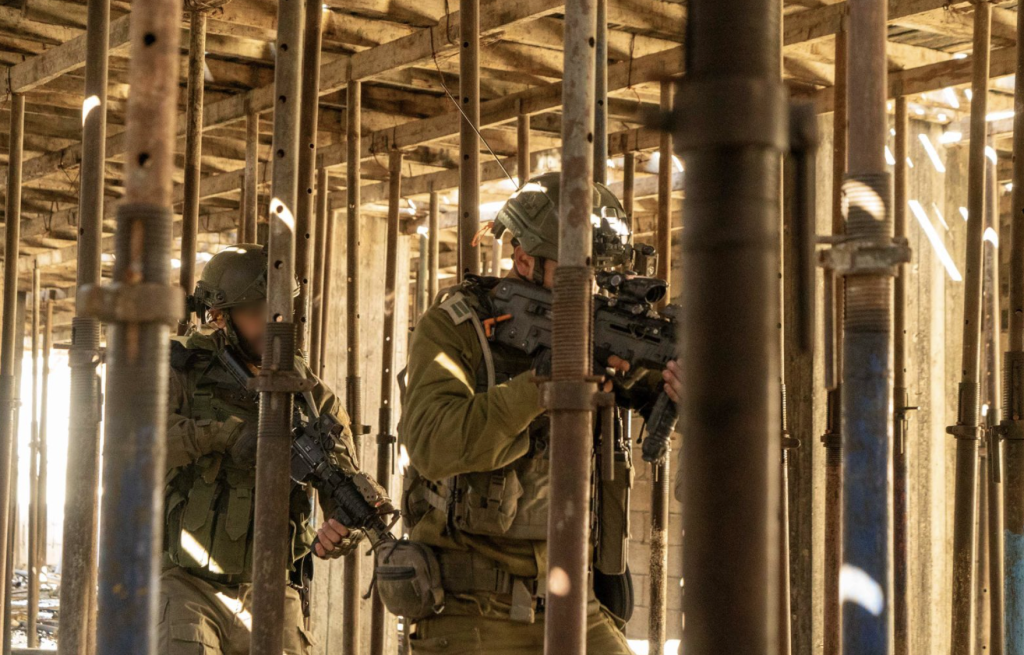
The Israel Defense Forces is in control of most of the southern Gaza city of Khan Younis following a difficult two-month battle against Hamas opposition therein. Khan Younis hosts an extensive tunnel network underneath it and is the hometown of Hamas leader Yahya Sinwar. The IDF has zeroed in on the area of Nasser Hospital, one of several health facilities in the city. The hospital is crowded with patients, staff and other people — and the IDF said in a February 15 statement that it has “credible intelligence” that hostages have been held here.
Palestinians have said they were asked to evacuate on February 14. However IDF spokesperson Rear Admiral Daniel Hagari said that “we emphasized that there is no obligation for patients or staff to evacuate the hospital. However, we have been urging other Gazans, in Arabic, on the phone and via loudspeakers, to move away from the danger that Hamas puts them in — via a humanitarian corridor we opened for this purpose. For the purpose of protecting uninvolved civilians in Gaza.”
This situation with Nasser Hospital is a familiar pattern of Hamas co-opting medical facilities across Gaza to support its terrorist activity in various ways, from operating hubs to weapons storage to tunnel entrances. In early November, the IDF eliminated Ahmed Siam, a Hamas commander trying to utilize human shields in northern Gaza’s Rantisi Hospital. In late December, the IDF said it found evidence of hostages being held at northern Gaza’s Indonesian Hospital. Gaza City’s Shifa Hospital was for weeks an area of focus, with the IDF revealing evidence that Hamas used the medical facility for weapons storage and underground tunneling.
Now, the battle for Khan Younis has culminated in a similar manner. It is unclear if hospitals in several communities have become the final sites for IDF operations because Hamas has retreated to them or because many civilians took shelter there — or a combination of both challenges. It is also not clear why the IDF leaves securing these hospitals to the end of each operation, rather than handling them first and ending Hamas’ use of them sooner. Each neighborhood battle has ended in a similar fasion with Hamas being systematically defeated in the city and the hospital being the last local area of IDF operation.
The IDF said on February 15 that “Hamas systematically uses hospitals as terror hubs. According to intelligence assessments and information we gathered on the ground, over 85% of major medical facilities in Gaza have been used by Hamas for terror operations.” To confront the challenge of operating in a medical facility, the IDF says it coordinates the transfer of medical supplies and has doctors and Arabic-speakers among the IDF officers in the hospital during the operation.
A second challenge in Gaza continued to emerge this week. The IDF sent its 162nd division into the Shati neighborhood in northeast Gaza, near the beach, on a two-week mission to dismantle Hamas elements that have resurfaced in the area since being taken by IDF forces in November. Hamas has re-emerged in other areas in northern Gaza. Tanks, infantry and special forces re-entered the built-up area in early February. During this operation, IDF forces found a Hamas tunnel under UNRWA headquarters and struck 150 targets using artillery, air strikes and naval gunfire.







